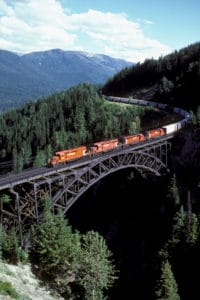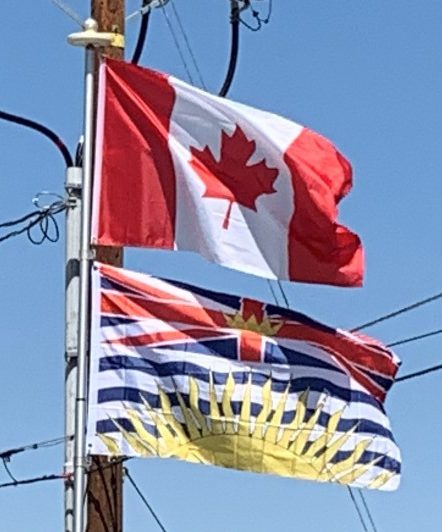TransLink operates SkyTrain, an automated metro system serving the cities of Vancouver, Burnaby, New Westminster, North Surrey and Richmond. In 2009, the Canada Line SkyTrain was completed, linking Vancouver International Airport and the city of Richmond to downtown Vancouver bringing the total to three operating metro lines.
A new line to Coquitlam and Port Moody (the Evergreen Extension of the Millennium Line) was completed in December 2016. There is planning for an extension of the Millennium Line through Vancouver City to the University of British Columbia. Turnstiles have been added to all existing stations in the system. In the past, SkyTrain used a proof of payment honor system. In the capital city of Victoria BC Transit and the provincial government’s infrastructure ministry are working together to create a bus rapid transit from the Westshore communities to downtown Victoria. In Kamloops, there is a bus rapid transit GPS trial underway to see how bus rapid transit affects smaller cities, rather than larger ones, like Victoria and Vancouver.
Rail:
Current passenger services in British Columbia are limited. VIA Rail Canada operates six long distance trains on two lines. Local services are limited to two regions, with TransLink providing rapid transit and commuter services in the Lower Mainland and by the Seton Lake Indian Band South of Lillooet with the Kaoham Shuttle. Amtrak runs international passenger service between Vancouver, Seattle, and intermediate points.

Several Heritage Railways operate within the province, including the White Pass and Yukon Route runs between Alaska and the Yukon, via British Columbia.
Water:
BC Ferries was established as a provincial crown corporation in 1960 to provide passenger and vehicle ferry service between Vancouver Island and the Lower Mainland as a cheaper and more reliable alternative to the service operated by the Canadian Pacific Railway and other private operators. It now operates 25 routes among the islands of British Columbia, as well as between the islands and the mainland. Ferry service to Washington is offered by the Washington State Ferries (between Sidney and Anacortes) and Black Ball Transport (between Victoria and Port Angeles, Washington). Ferry service over inland lakes and rivers is provided by the provincial government. Various other coastal ferries are operated privately.
Commercial ocean transport is of vital importance. Major ports are at Vancouver, Roberts Bank (near Tsawwassen), Prince Rupert, and Victoria. Of these, the Port of Vancouver is the most important, being the largest in Canada and the most diversified in North America.
Vancouver, Victoria, and Prince Rupert are also major ports of call for cruise ships. In 2007, a large maritime container port was opened in Prince Rupert with an inland sorting port in Prince George.
Air:
There are over 200 airports throughout British Columbia, the major ones being the Vancouver International Airport, the Victoria International Airport, the Kelowna International Airport, and the Abbotsford International Airport, the first three of which each served over 1,000,000 passengers in 2005. As of 2017, Vancouver International Airport is the 2nd busiest airport in the country and the second biggest International Gateway on the west coast (after Los Angeles) with an estimated 17.9 million travelers passing through in 2008.
Flag of British Columbia:
The flag of British Columbia is based upon the shield of the provincial arms of British Columbia. At the top of the flag is a rendition of the Royal Union Flag, defaced in the center by a crown, and with a setting sun below, representing the location of the province of British Columbia at the western end of Canada.
